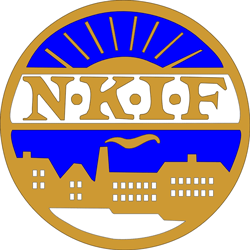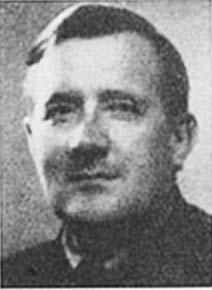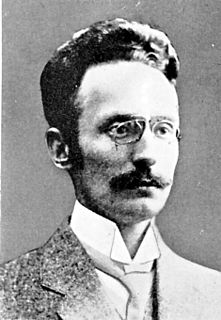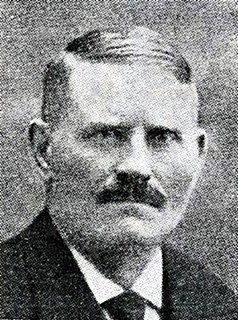
Lars Samuel Myhrer Evensen was a Norwegian trade unionist and politician. He belonged to the Communist Party in the 1920s, but later joined the Labour Party. He was also deputy chairman of the Norwegian Confederation of Trade Unions. After the Second World War he served for many years as Minister of Industry.

The Norwegian Union of General Workers (NAF) is a trade union in Norway. It has a membership of 33,000 and is affiliated with the Norwegian Confederation of Trade Unions (LO).

The Norwegian Union of Chemical Industry Workers was a trade union representing workers in the chemical industry in Norway.

The Norwegian Seafarers' Union is a trade union representing sailors in Norway.
Events in the year 1945 in Norway.

The Norwegian Union of Iron and Metalworkers was a trade union representing workers in the metal industry, workshops, and shipbuilding in Norway.

Ludvik Buland was a Norwegian trade unionist. He chaired the Norwegian Union of Railway Workers, but was imprisoned and died during the occupation of Norway by Nazi Germany.
Gunnar Ousland was a Norwegian editor, writer, trade unionist and politician for the Labour and Social Democratic Labour parties. He started out as a temperance activist and trade unionist before serving as a politician and in the party press. He edited several magazines and newspapers, including an illegal newspaper during World War II. He was later one of the proponents for the Common Program, and wrote historical books.

Eivind Heiberg was a Norwegian engineer and railway director. He is known as the chairman of Skabo Jernbanevognfabrik from 1899 to 1924, the Federation of Norwegian Manufacturing Industries from 1906 to 1912, the Norwegian Employers' Confederation from 1912 to 1917, the Norwegian State Railways from 1924 to 1938 and Standards Norway from 1924 to 1934.

LO Stat is one of two bargaining structures within the Norwegian Confederation of Trade Unions (LO). LO Stat is the counterpart in negotiations over state employees' wages and conditions with the government and the employer's organisation, Spekter.

The Norwegian Union of Building Industry Workers was a trade union in Norway, organized under the national Norwegian Confederation of Trade Unions.

The Norwegian Union of Paper Industry Workers was a trade union representing workers involved in manufacturing paper in Norway.

Gunnar Sethil was a Norwegian trade unionist and politician for the Labour Party.

Norwegian Transport Workers' Union was a Norwegian trade union which was established on 2 April 1896. The union organised workers in logistics and private goods and passenger transport. The main areas for the union were drivers plus workshop and maintenance personnel in the bus companies, warehouses and terminal workers, drivers in forwarding and wholesale industry, mailroom employees and delivering personnel in newspaper companies, taxi drivers, employees in the environmental industry, freight drivers and stevedores workers in the ports.
The Norwegian Union of Textile Workers was a trade union representing workers in the textile industry in Norway.
The Norwegian Union of Stone Industry Workers was a trade union representing stonemasons and quarry workers in Norway.
The Norwegian Union of Planing Workers was a trade union representing workers in saw mills and related fields in Norway.
The Norwegian Bakery and Confectionery Workers' Union was a trade union representing workers in the baking trade in Norway.
The Norwegian Union of Meat Industry Workers was a trade union representing workers in abattoirs and butchers in Norway.
The Norwegian Association of Health and Social Care Personnel was a trade union representing auxiliary nurses and care workers in Norway.












